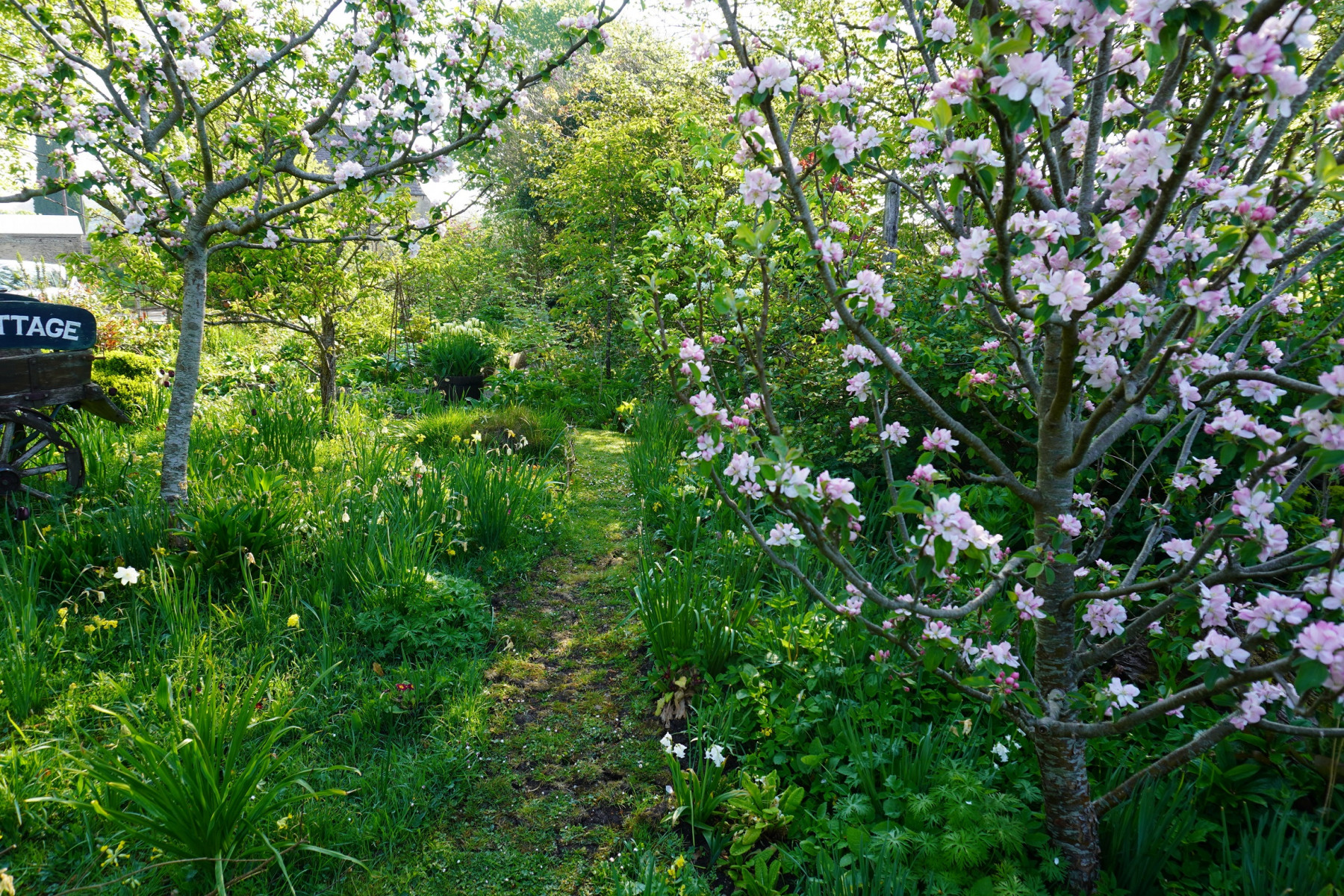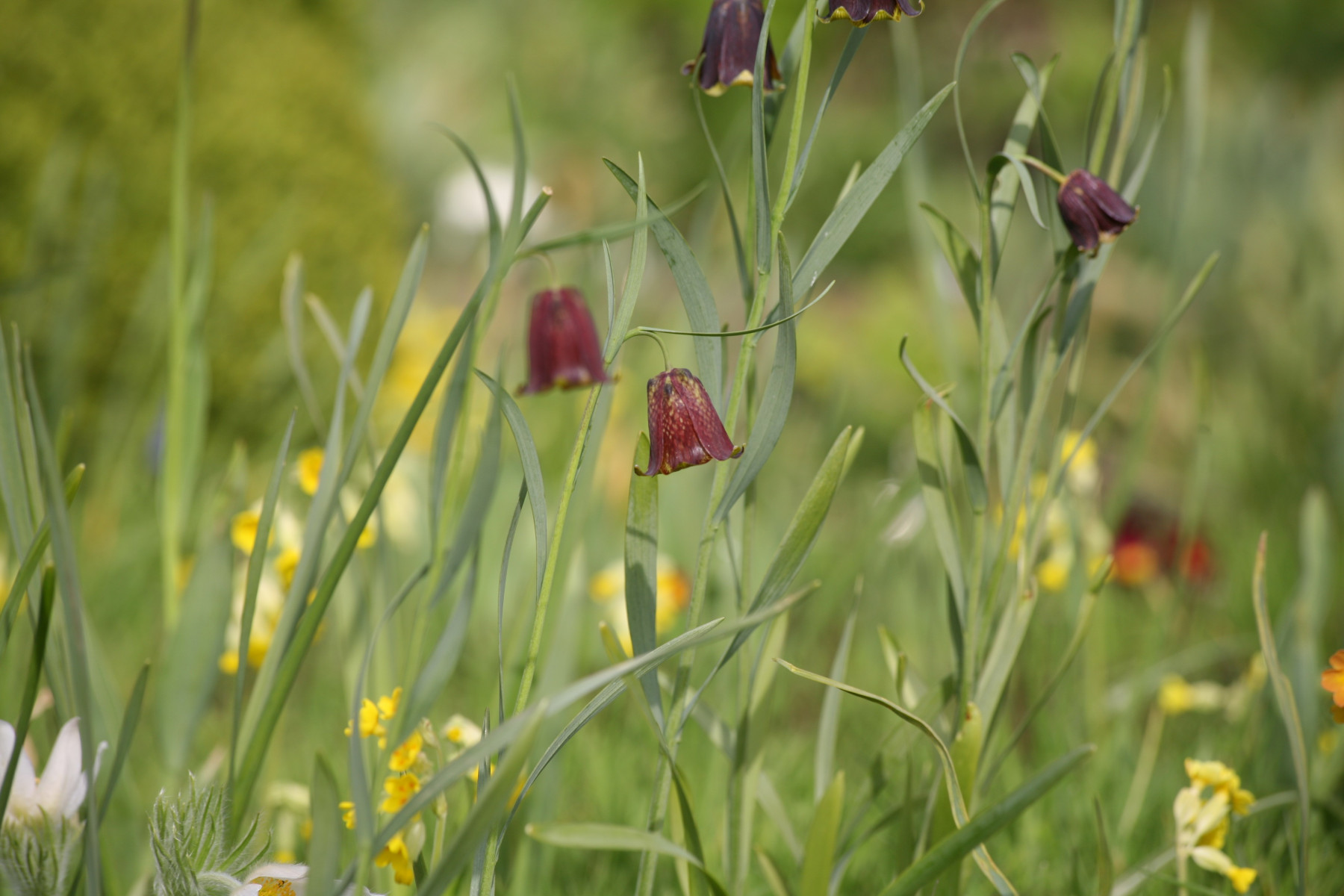
I like a touch of wilderness in my gardens and I often try to analyse why, after all I’m not a country lass by definition. I always tell people that I was born under the gas tower in Southall – not literally you understand. I have to stop trotting this out though for Southall’s gas tower was demolished in 2019. Housing is about to spring up. It had a lively childhood, because I was an honorary chap with two brothers and several male cousins. I got to roam and there were, way back then, pockets of wildflowers and low-lying fields with buttercups.
There are buttercups and sorrel just over my garden wall, high in the Cotswolds, so I don’t want a formal garden of straight lines and showy flowers. I want my garden to nestle into its space, to embrace its genius loci – or the spirit of the place. We need more of that in my village, which is ‘strimmed and trimmed’ to within an inch of its life. Nature stands little chance in my locality, so I’m helping it out a bit in my garden.
I’ve got some wild areas on the edges, that I try to leave undisturbed and they’ve become wildlife hotspots. The area close to the south-facing wall is covered in roses and honeysuckle and I’ve used garden forms of our native woodbine, Lonicera periclymenum. The highly fragrant rhubarb- and custard-coloured flowers attract moths with long tongues, although many a shorter-tongued bumblebee bites into the back of the tube and robs the nectar.
Roses mingle with honeysuckle and they are blowsy and there’s an informal-looking American apricot and cream climber, ‘Mrs Honey Dyson’, that flowers on and on. It’s apparently grown through the meadow grass at the National Trust’s Sissinghurst Castle in Kent, athough I’ve never seen it. Here it’s planted with ample shrub roses, including ‘Buff Beauty’ and ‘Königin von Dänemark’ – often sold as ‘Queen of Denmark. If I had a larger meadow, I’d plant roses through it and let them flow ala Vita Sackville-West.
I do have a mini-meadow and, again, this is largely undisturbed apart from a once-a-year mow in early autumn. Meadows were all the rage in the 1990s, but I avoided making one for many a year having read descriptions of earth moving machines taking off a foot of top soil. The destruction, wreaked by removing soil and replacing it cannot be justified, because your soil is full of insects, including beetles, and there’s a seed bank containing native flowers from your locality. I’ve written all about this in Do you want to go on a lion hunt?.
It’s worth changing the way you garden, because it’s become more important than ever to reverse the decline in wildlife through our gardens. More and more land is being built on and over-intensive farming has wreaked havoc, for fifty years or more. Mowing and tree felling, by councils of all types, is still ongoing, but it makes me shudder when I think of a world without birdsong. If we don’t supply insects and nesting sites that could happen. After all lots of common birds are now on the Red List – including starlings, cuckoos, house sparrows and swifts. People who should know better continue to wield the chain saw – although they usually get a man or small team in for the actual hard work.
What’s to de done. Well, one of the best things you could possibly do in your garden is to plant two or three apple trees The spring blossom sustains bees and other pollinators this tree can also attract 93 species of insect because, although it’s not native, we’ve grown apple trees in our gardens for thousands of years. Many birds and creatures appreciate the fallen fruit.
Sixteen years ago, I planted three varieties that I really wanted to grow, ones that you couldn’t find in the supermarket. I was mad keen to grown ‘Blenheim Orange’, a thin-skinned dual-purpose apple that you can eat raw or cook. It stores for months too. The original seedling was found growing against the boundary wall of Blenheim Park in Woodstock in Oxfordshire by a local man called Kempster. He transplanted it in his garden and it became known as ‘Kempster’s Pippin’, until a Worcestershire nurseryman called Biggs obtained permission from the Duke of Marlborough to market the variety as ‘Blenheim Orange’.
‘Blenheim Orange’, which went on to win a Banksian Silver Medal in 1820, is my favourite apple because the sweet flesh has a hint of floral, reminiscent of rose-flavoured Turkish Delight. My ‘Blenheim Orange’ took seven years to fruit and I once threatened it with relegation to the compost heap and mentioned the name ‘Bramley Seedling’.
It worked, although my ‘Blenheim Orange’ still took eight years to produce a decent crop, although it definitely has a biennial tendency. On year off and one year on and it’s not a tidy tree. The branches splay out rather untidily, but it’s a wonderful dual-purpose apple! It’s also a triploid apple, so there’s little or no viable pollen. I had to plant two other apple varieties in the same pollination group because most apples need to be cross pollinated to crop well.

I grow two aromatic eaters, ‘Pitmaston Pineapple’ and ‘D’Arcy Spice’. Both crop well, but the small, yellow apples of ‘Pitmaston Pineapple’ are the grandchildren’s favourite and they stayed on the tree when the wind tore through the garden. I ordered the same M26 semi-dwarfing rootstock on all three trees, because this is meant to keep them below 3m in height, but each tree is different. The ‘Blenheim Orange’ is an all arms and legs. ‘D’Arcy Spice’ is an upright guardsman and ‘Pitmaston Pineapple’ a Jewish candelabra or menorah.
The bees enjoy the blossom and we get to eat our own home-grown apples and they can keep us going for at least three months, after a good harvest. That’s one apple a day each, cut up on our breakfast muesli, and I firmly believe the old adage that an apple a day keeps the doctor away. They’re rich in fibre, antioxidants and in vitamins A, C and K so they help the dietary system, the immune system and thyroid function. The pectin reduces cholesterol too. Most importantly they taste wonderful and, if you grow your own, they’re free. If you’re organic, they’re also pesticide free.
The grass underneath is put to good use and mown once a year, in early September. The floral display begins with large-flowered crocuses, forms of Crocus vernus, The silver and purple crocus ‘Vanguard’ (so named because it flowers a fortnight earlier than other larger crocuses) precedes purples and they are self-seeding to give a variation in colour and type. Daffodils follow next and they are subtle country-style affairs, not jaunty in-your-face ones. Wild daffodils are hard to find, but the old, variety ‘W.P. Milner’ is a wilding look alike.
As the daffodils open, the cowslips start to flower and these are far more useful in grass than moisture-loving primroses because they tolerate much drier conditions. Self-seeding fritillarias follow, principally Fritillaria pontica and F. pyrenaica. They are similar in stature to Snake’s-head fritillaries (F. meleagris), but they need moister conditions than we can provide on top of the Cotswold scarp. We make do with brown and green bells instead. Camassias and pasque flowers also self-seed and then the meadow flowers start.
My flowery mead is much more interesting than a scalped lawn, because there’s flower power and movement. The butterflies and bees love it and so do I!



